This Icelandic refrigerator pickled beets recipe with vinegar is easy to make and has a sweet, unadulterated, and unapologetic beet flavor.
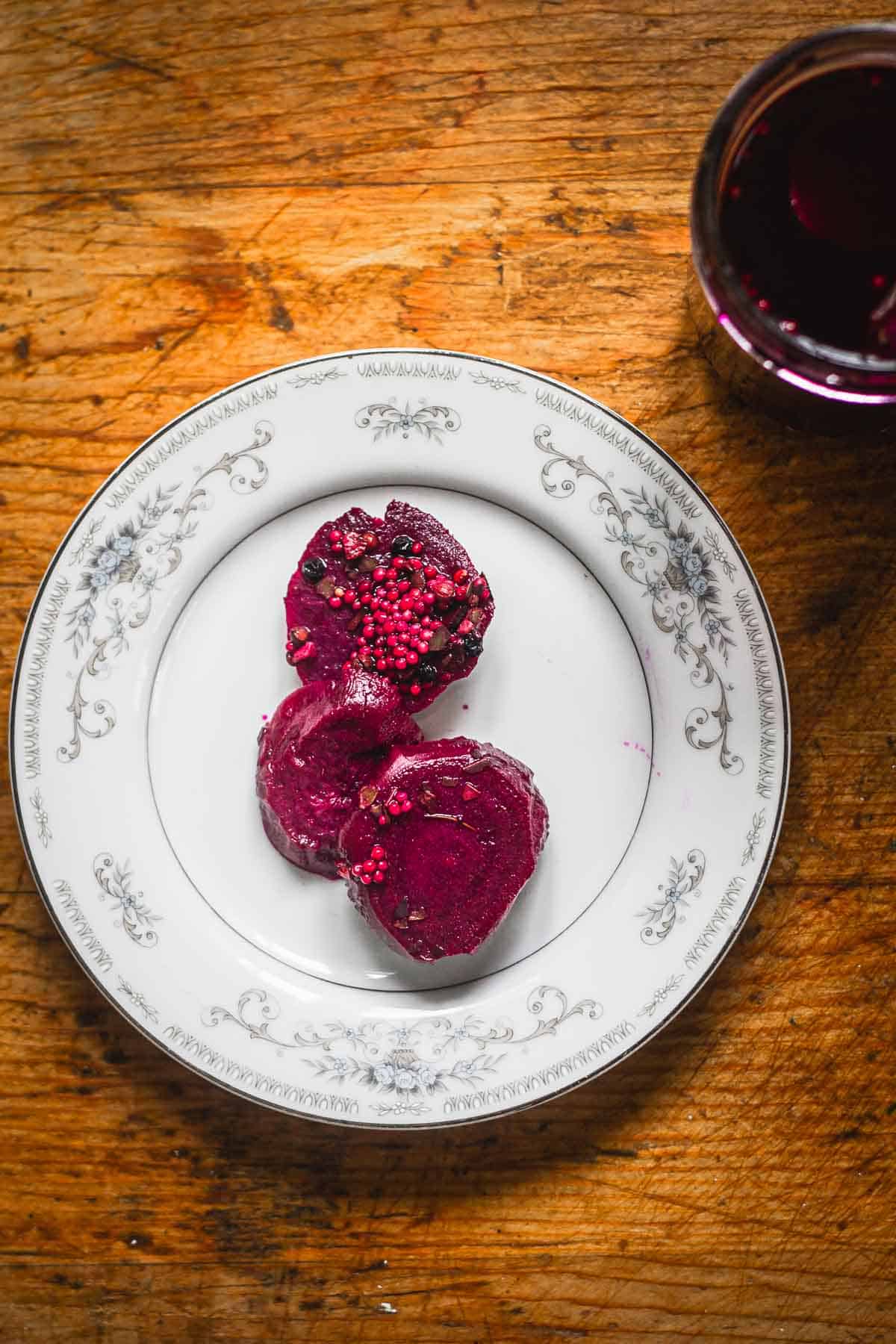
Whey-fermented, salt-cured, or pickled in a vinegar solution, the quick pickles and traditional pickles I make are so unapologetically pickled you might as well just drink their pickling juice and call the doctor immediately.
But Beatrice's Icelandic pickled beets are different from the pickles I love. They are mildly acidic, just the right amount of sweet, and almost completely untouched by spices. In other words, these Icelandic pickled beets taste so strongly of beets there's no confusing them for anything else.
And yet, I love them just as much for what they represent as I do for their taste.
Inspiration
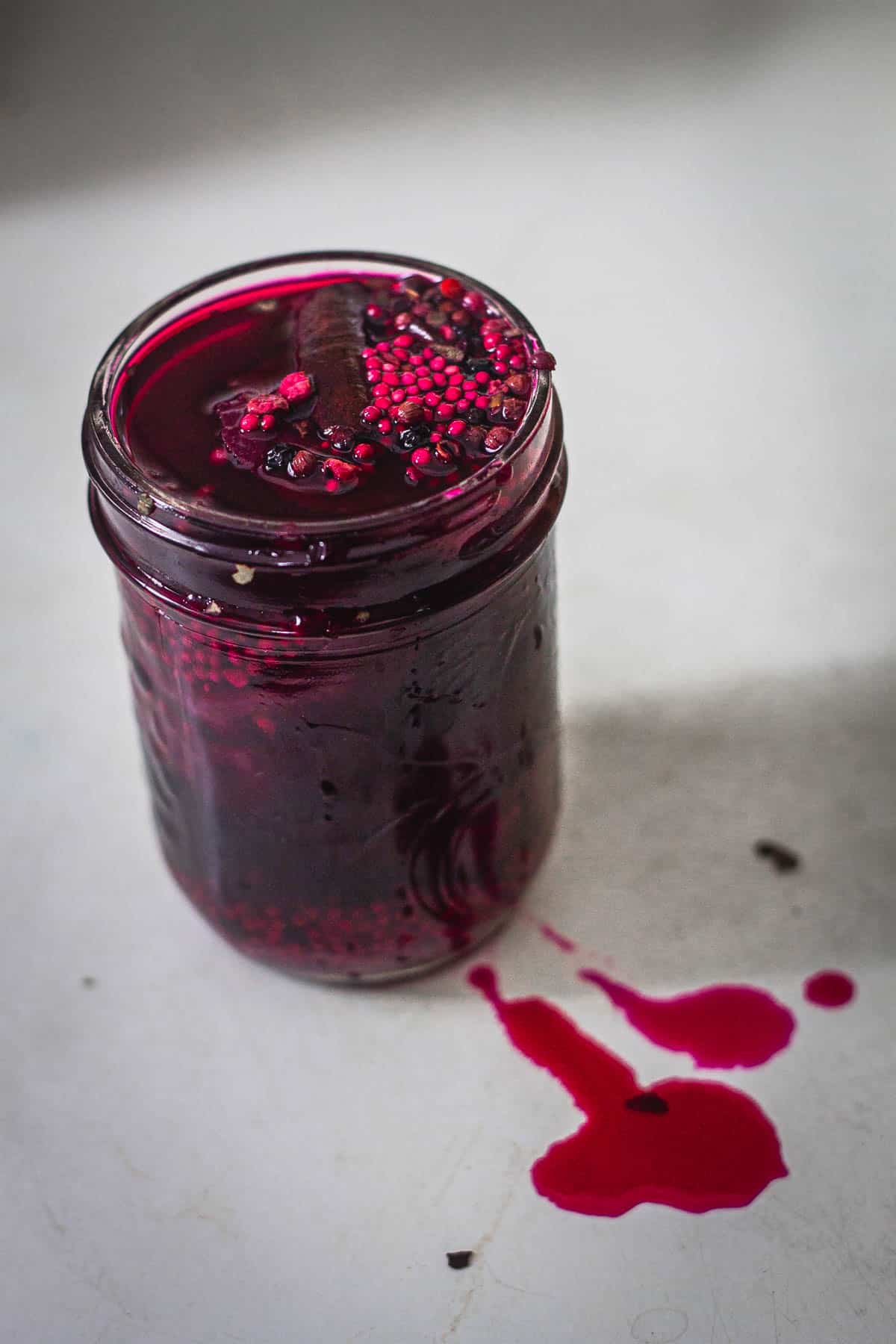
I heard about the history of these pickled beets when G's mother told me how she made her pickled beets recipe, which she learned from her mother, Beatrice.
Beatrice was G's maternal grandmother. I never met her, but I heard all about her strength, frugality, and uncompromising opinions. I heard about her childhood growing up in an Icelandic family in Manitoba, and her rebellious decision to marry a British man. I heard about her cooking, and her ability to make more with less. And above all else, I heard about the love she showed to her family.
Because there it was, the love you feel for your family, as pure and innate as the desire of water to flow downward.
And then there was the love you feel for your partner, complex and multifaceted and as raw as the attraction of a bee to honey.
And then, if you're lucky, behind it all hid the love you feel for your partner's family - conflicted, forgiving, and respectful, as quiet as a kitten's appreciation towards the sun as it basks in its rays.
I adapted Beatrice's Icelandic pickles just a tad to ensure they are safe for canning. However, to honor this recipe's true legacy and a devil-may-care attitude towards measurements, I bring you both versions - the safe-for-canning Icelandic pickled beets (adapted from bernardin pickled beets recipe) and G's grandmother's original, refrigerator-only recipe. The quick-pickle recipe is much less heavy on the vinegar and tastes even more like a beet.
Because sometimes, you just want to eat a pickled beet that tastes like its origins: earth, sugar, family, and love.
Ingredients to make Pickled Beets
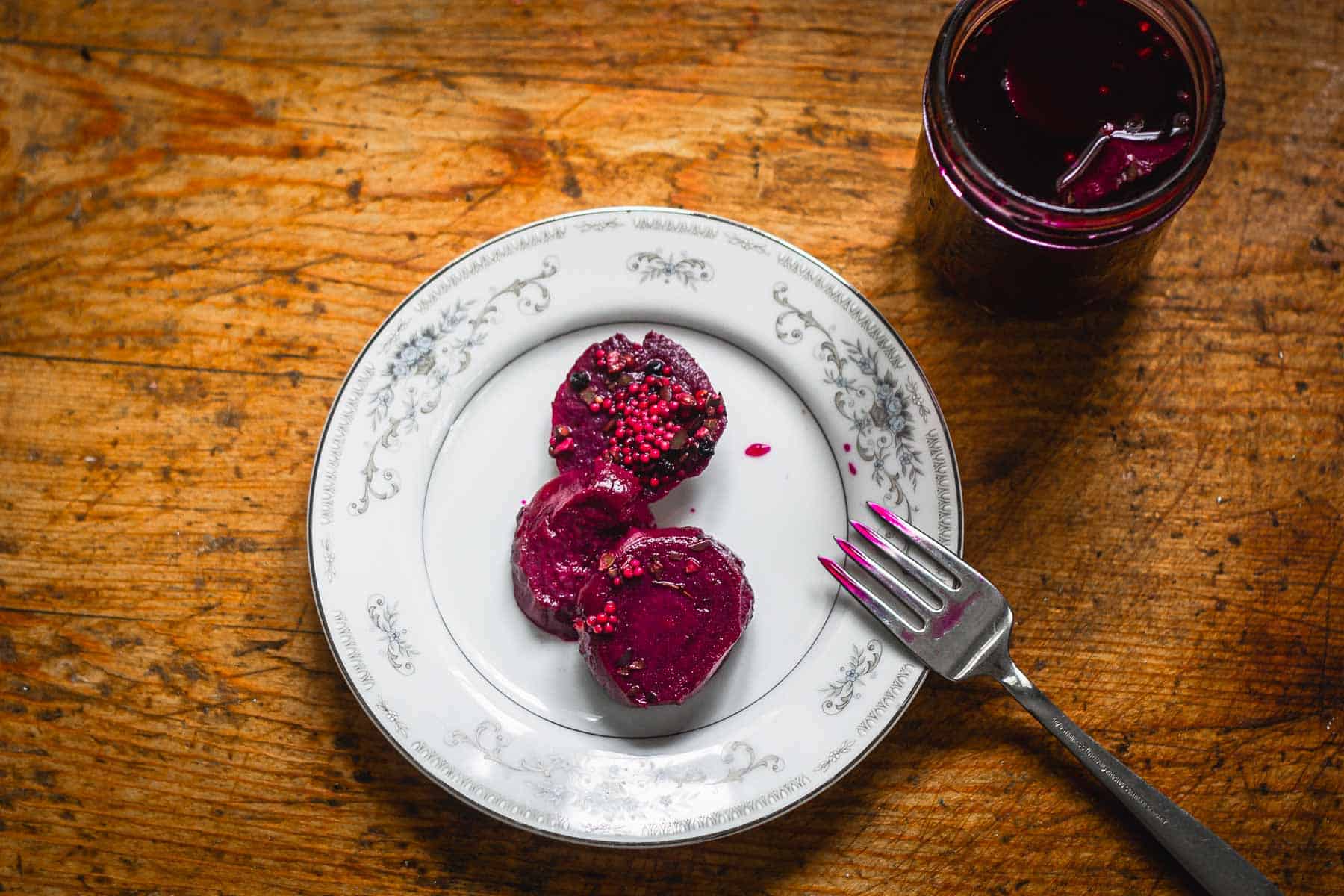
Quick-pickled beets refrigerator version:
- Prepared beets (wash the beets and leave the ends and roots untouched)
- White vinegar
- Water
- Brown sugar
- Pickling spice
Safe-for-canning pickled beets:
- Prepared beets
- White vinegar
- Water
- Brown sugar
- Pickling spice
Equipment:
- Saucepan - for making the brine.
- Large pot - for cooking the beets
- 3 pint jars
- canning pot optional - if making traditional canned pickled beets.
- 1 canning kit optional - for beginners, I recommend buying a single canning kit to get you started on your canning journey. It will last you years!
Directions to make this quick Pickled Beets Recipe:

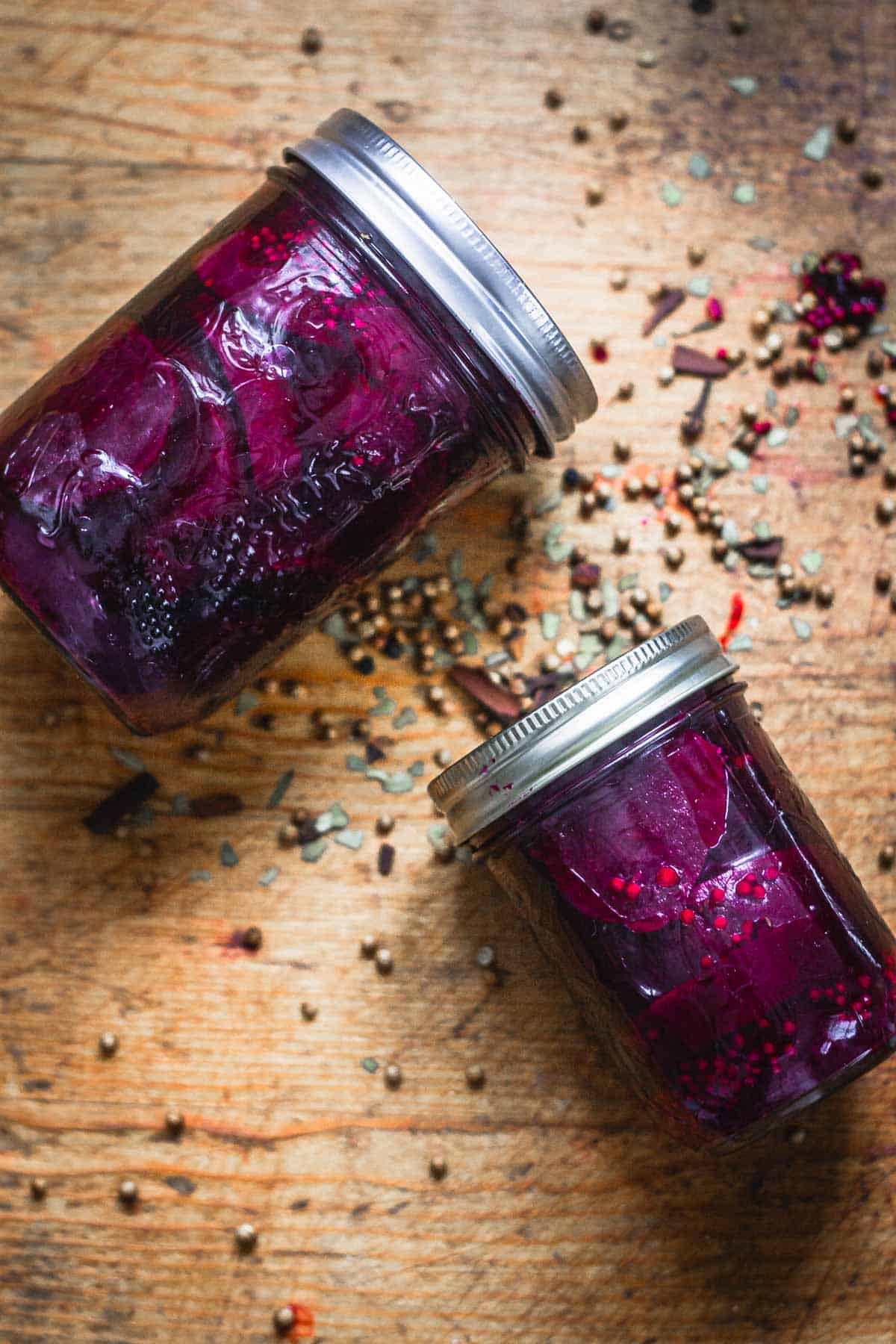
Cook Beets
Place beets in a large saucepan, cover the beets with water, and boil the beets. Cook the beets. Next, cover with a lid and simmer until beets test tender with a fork. Drain, and rinse under cold water. Make sure to wear plastic gloves and peel the beets.
Refrigerator Pickled Beets recipe:
Bring water, vinegar, and pickling spice to a boil in a small saucepan. Then, cover the mixture and continue cooking. Arrange alternating beets and brown sugar layers in your clean jars or in a large casserole dish. Pour the brine over the beets; make sure to cover it.
After covering it with brine, put on a lid and let it cool. Transfer the jars to the fridge, and let flavors meld for at least 24 hours. These easy to make and delicious beets will be ready to eat, though their flavor will intensify daily.
Canned Pickled Beets recipe:
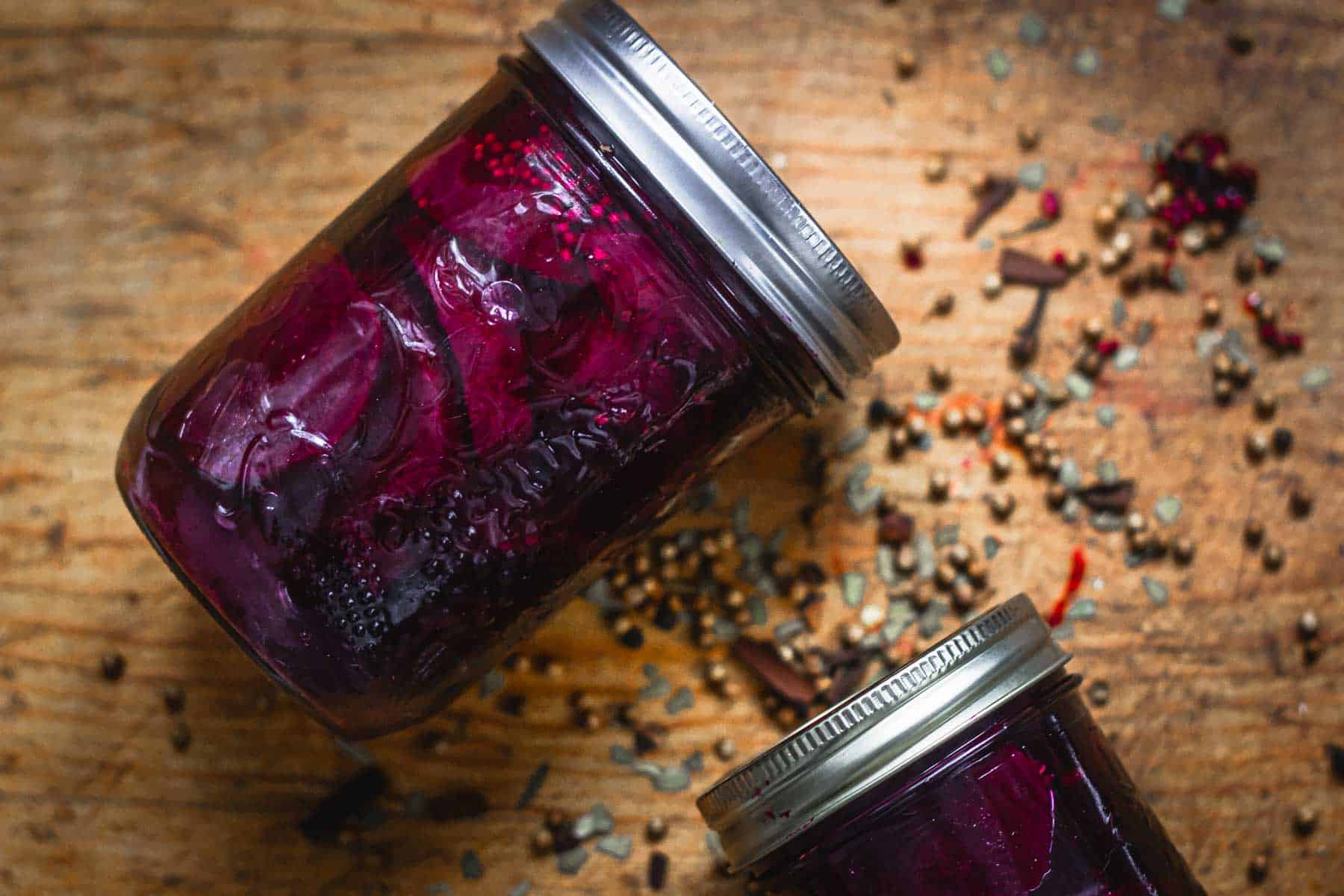
Place your mason jars on a rack in a boiling water canner. Cover the jars with water and heat them to a simmer. Next, set screw bands aside and immerse sealing discs in hot, but not boiling, water. Afterward, keep the jars and the lids' sealing discs hot until ready to use.
Make brine
Combine the water, vinegar, brown sugar, and pickling spices in a small saucepan. Bring the ingredients in the saucepan to a boil and continue cooking for another 15 minutes.
Pack beets into jars
Next, packs the beets into the hot jars. Add hot pickling brine liquid to cover the beets, leaving a bit open at the top of the jar. Afterward, cover with hot sealing discs, and screw bands just enough to meet resistance (do not tighten all the way).
Canning pickled beets
Place the filled jar with canned beets on the rack in the canner. Repeat for remaining beets and hot brine. When the canner is filled, ensure that all jars are covered by at least one inch of water. Cover the canner and bring water to a full rolling boil before counting processing time when canning the beets. Boil filled jars for half an hour.
When the processing time is complete, remove the canner lid, wait for a hot minute, remove jars without tilting and place them upright on a protected work surface. Finally, cool upright, undisturbed, for a day.
Note: DO NOT RETIGHTEN screw bands.
Accompanying dishes
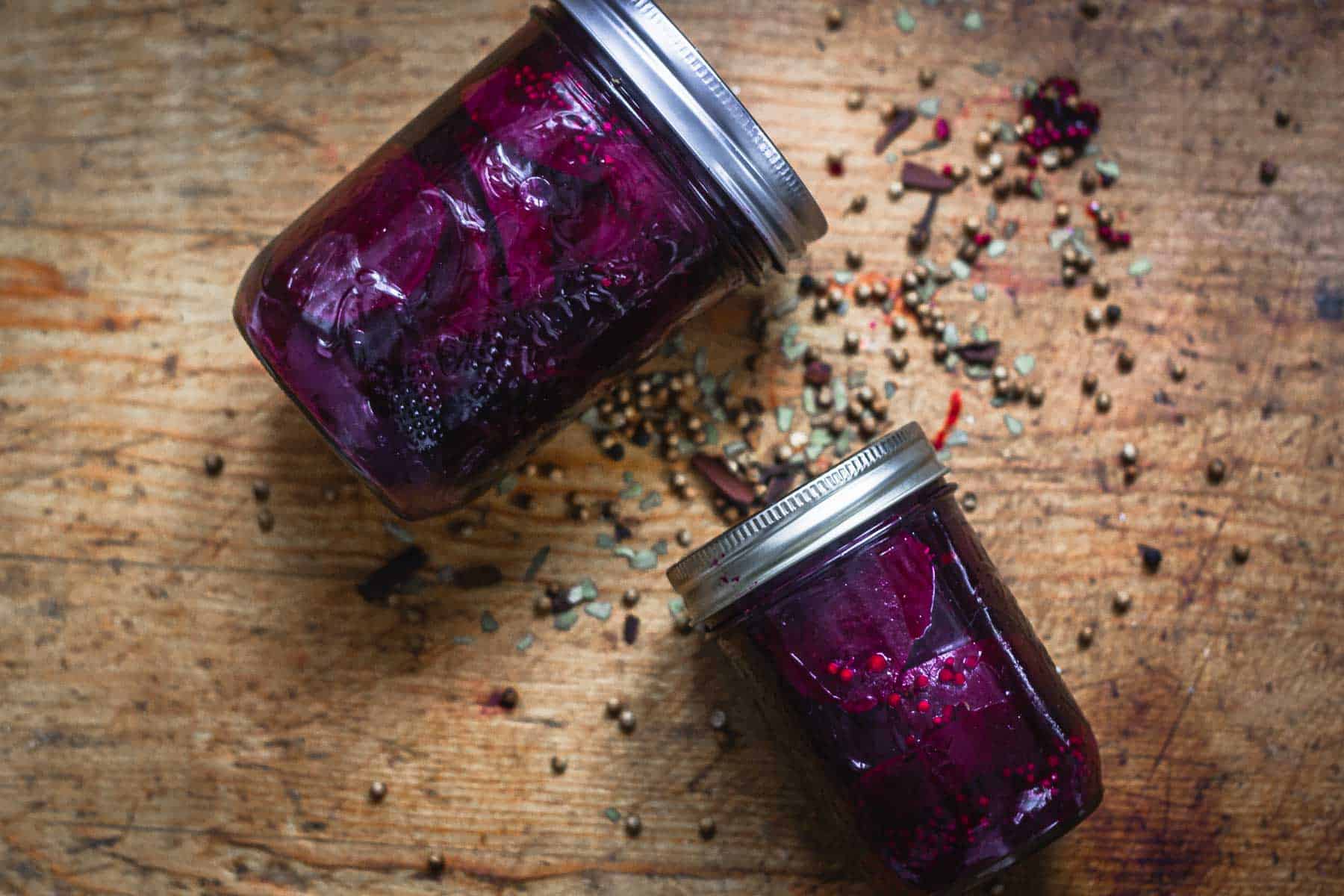
Sweet pickled beets are a versatile addition to any meal and can be served in a variety of ways.
Roasted beets are great additions to any salad. Pickled beet salads are also great, providing a tangy, sweet flavor and beautiful color for those who love pickled beets.
Another classic pairing for pickled beets is with hard boiled eggs. The tangy sweetness of the beets complements the mild creaminess of the eggs. You can arrange sliced pickled beets on a platter with halved eggs for an attractive appetizer, or chop them both up and toss them together in a salad.
Slice pickled beets and serve as a side dish with meat or fish, adding depth and complexity to the plate.
They are a great topping for sandwiches or served alongside cheese and crackers as a flavorful snack.
Additionally, you can use pickled beets as dips or spreads, providing a unique twist to classic recipes.
This simple recipe can be a delicious and healthy addition to any meal.
FAQs
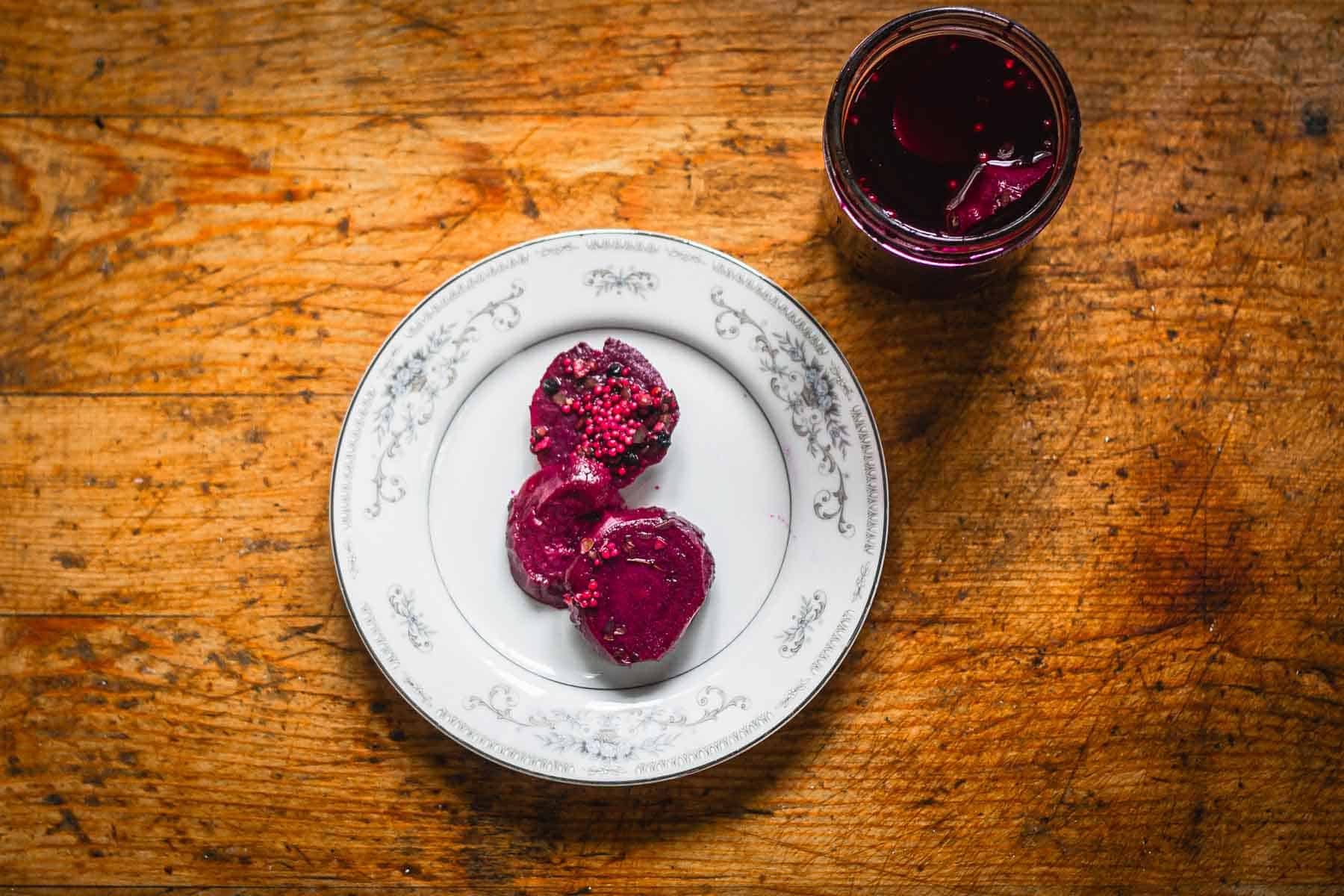
Pickled beets can be a healthy addition to your diet in moderation. They are a good source of antioxidants, including betalains, which may help reduce inflammation and protect against certain cancers. However, pickled beets are high in sodium due to the pickling process, so individuals with high blood pressure or cardiovascular issues should consume them in moderation. Additionally, some brands of pickled beets may contain added sugars, so checking the nutrition label before consuming is important, so this is a great recipe for your health.
While pickled beets are a delicious and easy way to include them in your diet, they may not necessarily be healthier. The pickling process involves soaking the beets in vinegar, which can strip away some of the vegetable’s nutrients. However, pickled beets are also a great source of vitamins and minerals, including folate, iron, and fiber. Additionally, beets are considered a superfood due to their high levels of antioxidants and anti-inflammatory properties, so consuming them in any form is beneficial for your health.
Pickled beets can go bad if they are not stored properly or if they have been opened for too long. Take care to preserve the beets properly. Typically, pickled beets will last up to two years if they are unopened and you place them in a cool and dry place. However, once opened, store in the refrigerator and consumed within four to six weeks. Signs that pickled beets have gone bad include a cloudy appearance, mushy texture, unpleasant odor, or flavor. It's always best to discard any pickled beets that show any of these signs of spoilage.
When it comes to making pickled beets, the type of vinegar used can definitely make a difference in the final taste. Distilled white wine vinegar is the most common choice for pickling, but apple cider vinegar and red wine vinegar can add a slightly different flavor profile. Some people even experiment with rice wine vinegar or balsamic vinegar for a more unique taste. Ultimately, the type of vinegar used should be chosen based on personal preference and the flavor profile desired in this easy recipe.
Recipe
Tried and loved this recipe? Please leave a 5-star review below! Your reviews mean a lot to me, so if you've got any questions, please let me know in a comment.

Beatrice's Icelandic pickled beets
Equipment
- canning pot optional
- 1 canning kit optional
Ingredients
Fridge version:
- 5 cups cooked beets washed, ends and roots left untouched
- 1 cup white vinegar
- 3 cups water
- ½ cup brown sugar
- 1.5 tablespoon pickling spice
Safe-for-canning version (recipe adapted very slightly from Bernardin):
- 5 cups prepared beets 1250 ml
- 1 ¼ cups white vinegar 312 ml
- 1 cup water 125 ml
- 1 cup brown sugar 125 ml
- 1.5 tablespoon pickling spice
Instructions
- Place beets in a large saucepan. Cover with water and bring to a boil. Cover with lid and simmer 40 minutes until beets test tender with fork. Drain, and rinse under cold water. Wearing plastic gloves, peel beets.
Fridge version:
- In a small saucepan, bring water, vinegar and pickling spice to a boil. Cover and continue cooking for 15 additional minutes.
- In your clean jars or in a large casserole dish, arrange alternating layers of beets and brown sugar. Cover with brine.
- Cover with lid, and let cool. Transfer to fridge, and let flavours meld for at least 24 hours. The beets will be ready to eat then, though their flavour will intensify a bit with every day.
Safe-for-canning version:
- Place 3 clean 500 ml mason jars on a rack in a boiling water canner. Cover jars with water and heat to a simmer. Set screw bands aside, and immerse sealing discs in hot, but not boiling water. Keep jars and lids sealing discs hot until ready to use.
- In a small saucepan, bring water, vinegar, brown sugar and pickling spice to a boil. Cover and continue cooking for 15 additional minutes.
- Pack beets into hot jars to within ¾ inch (2 cm) of the top. Add hot pickling liquid to cover beets, leaving ½ inch (1 cm) of headspace at the top of the jar. Cover with hot sealing discs, and then screw bands just enough to meet resistance (do not tighten all the way).
- Return filled jar to rack in canner. Repeat for remaining beets and hot brine. When canner is filled, ensure that all jars are covered by at least one inch of water. Cover canner and bring water to full rolling boil before starting to count processing time. Boil filled jars for 30 minutes.
- When processing time is complete, remove canner lid, wait 5 minutes, then remove jars without tilting and place them upright on a protected work surface. Cool upright, undisturbed for 24 hours. DO NOT RETIGHTEN screw bands.


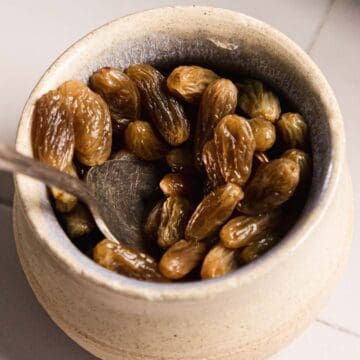

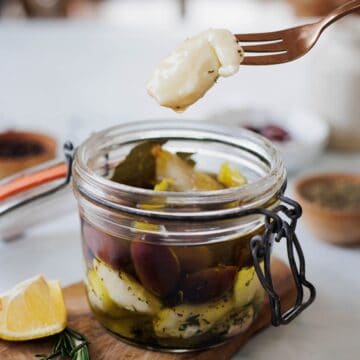
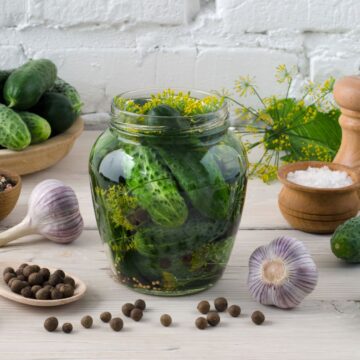
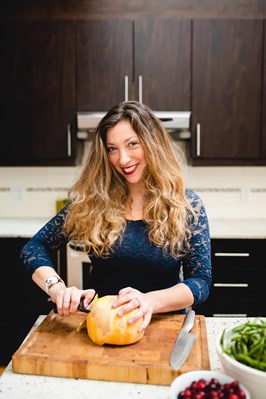
Darlene Tomes says
Lovely, Ksenia. Thank you so much for remembering one we love and miss so much. You and Beatty would have gotten along so well.
kseniaprints says
It means a lot to me to have you say that. Thank you, Darlene.
Berta says
I love, love, love how you pair recipes with such beautiful family stories! You're honestly the best food blogger I have ever read!!
kseniaprints says
You are just the kindest, Berta. So glad you enjoyed this one 🙂
Berta says
🙂
Desiree says
What a lovely story and tribute to Beatrice! Do you have any recommendations or recipes for a pickling spice blend? I would love to make the refrigerator version of these pickles!
kseniaprints says
Yes! I do. I have made this basic one before to great results, and this guide from The Kitchn provides an excellent and simple 101 to pickling spices. Enjoy!
Lisa Favre says
Yum! I could totally gobble all of these up. This post also reminds me that I've been meaning to make pickled eggs!
Lisa Favre
http://marblecrumbs.com
kseniaprints says
Do you have a pickled eggs recipe you like??